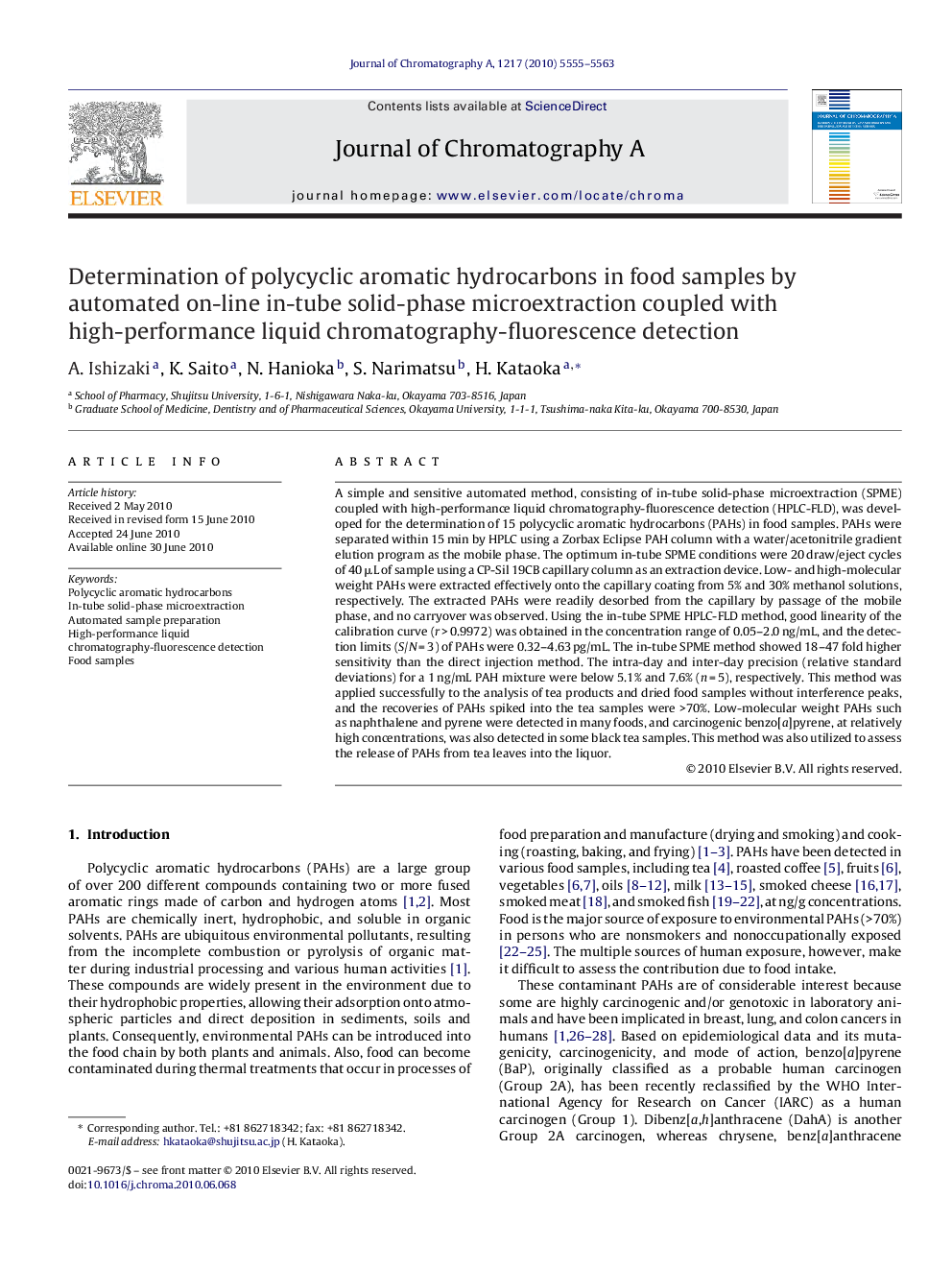| Article ID | Journal | Published Year | Pages | File Type |
|---|---|---|---|---|
| 1204696 | Journal of Chromatography A | 2010 | 9 Pages |
A simple and sensitive automated method, consisting of in-tube solid-phase microextraction (SPME) coupled with high-performance liquid chromatography-fluorescence detection (HPLC-FLD), was developed for the determination of 15 polycyclic aromatic hydrocarbons (PAHs) in food samples. PAHs were separated within 15 min by HPLC using a Zorbax Eclipse PAH column with a water/acetonitrile gradient elution program as the mobile phase. The optimum in-tube SPME conditions were 20 draw/eject cycles of 40 μL of sample using a CP-Sil 19CB capillary column as an extraction device. Low- and high-molecular weight PAHs were extracted effectively onto the capillary coating from 5% and 30% methanol solutions, respectively. The extracted PAHs were readily desorbed from the capillary by passage of the mobile phase, and no carryover was observed. Using the in-tube SPME HPLC-FLD method, good linearity of the calibration curve (r > 0.9972) was obtained in the concentration range of 0.05–2.0 ng/mL, and the detection limits (S/N = 3) of PAHs were 0.32–4.63 pg/mL. The in-tube SPME method showed 18–47 fold higher sensitivity than the direct injection method. The intra-day and inter-day precision (relative standard deviations) for a 1 ng/mL PAH mixture were below 5.1% and 7.6% (n = 5), respectively. This method was applied successfully to the analysis of tea products and dried food samples without interference peaks, and the recoveries of PAHs spiked into the tea samples were >70%. Low-molecular weight PAHs such as naphthalene and pyrene were detected in many foods, and carcinogenic benzo[a]pyrene, at relatively high concentrations, was also detected in some black tea samples. This method was also utilized to assess the release of PAHs from tea leaves into the liquor.
